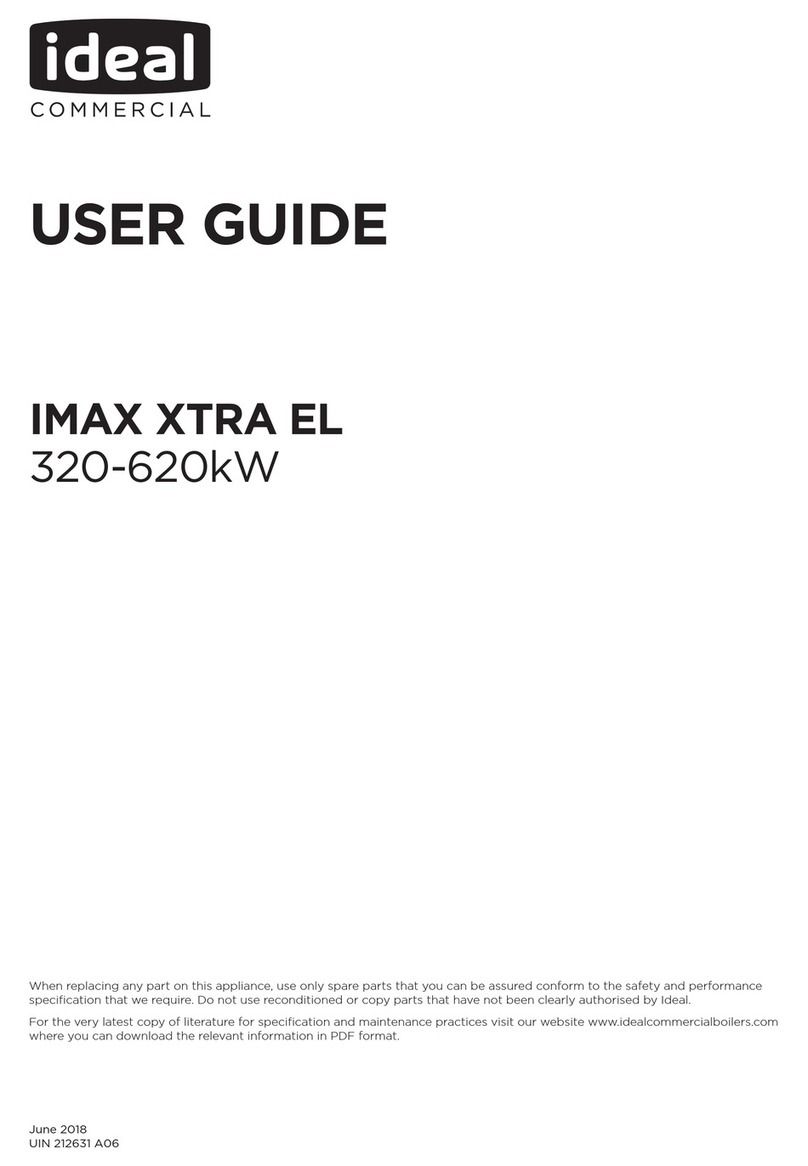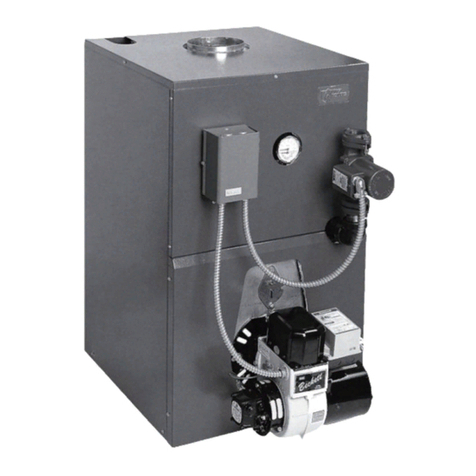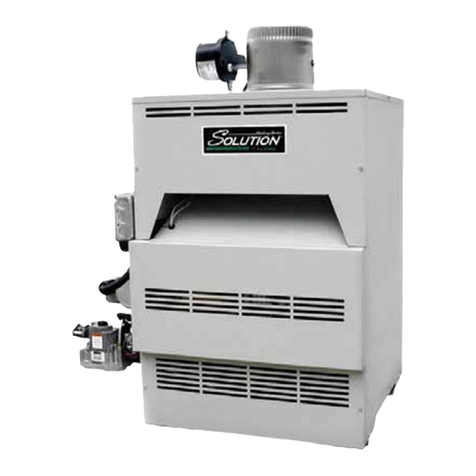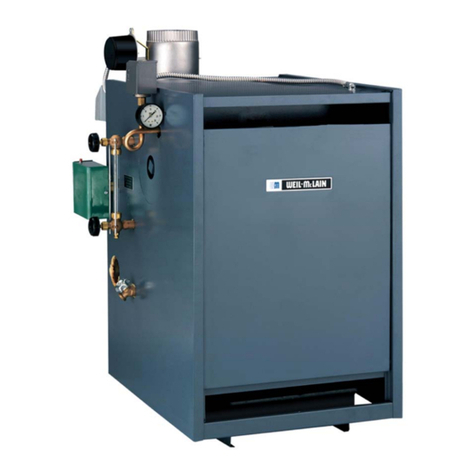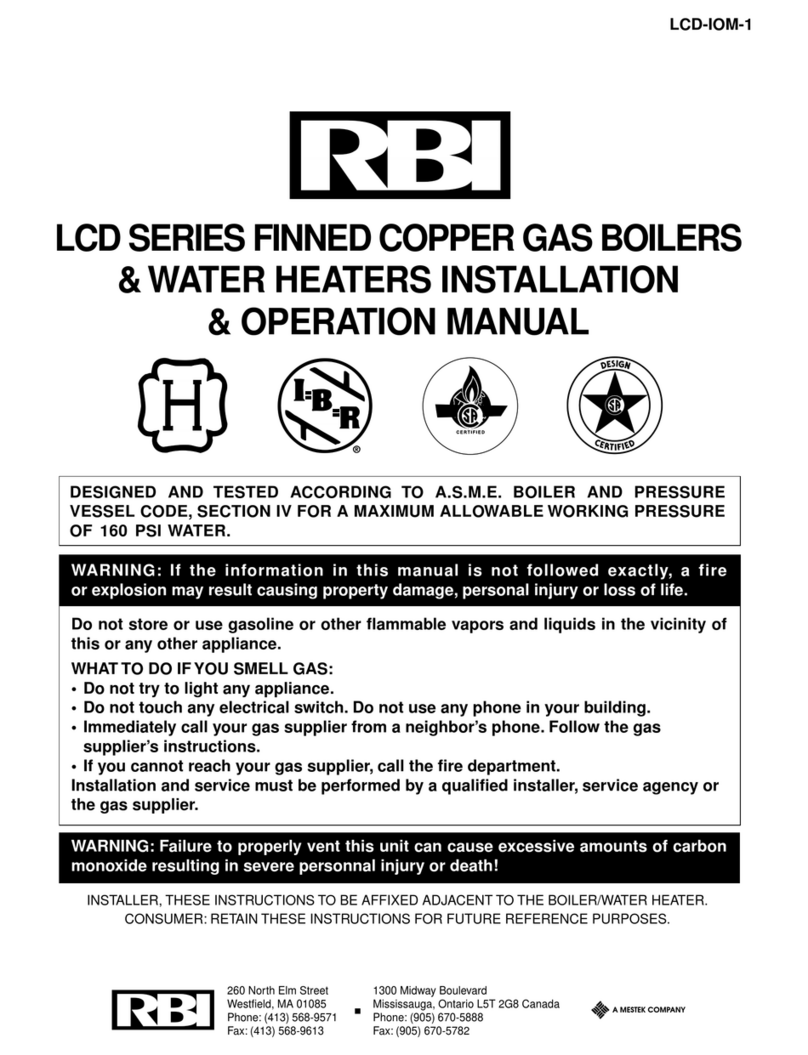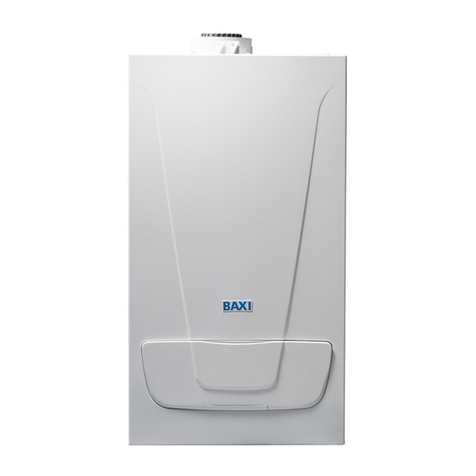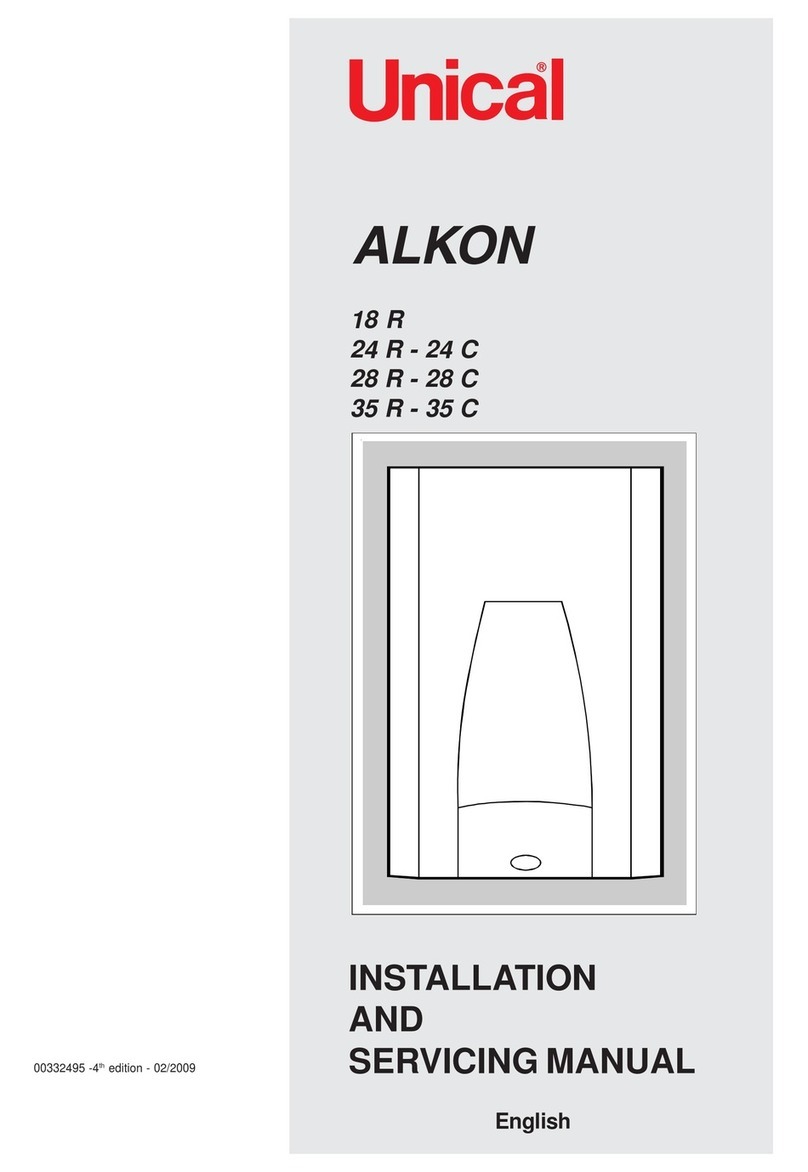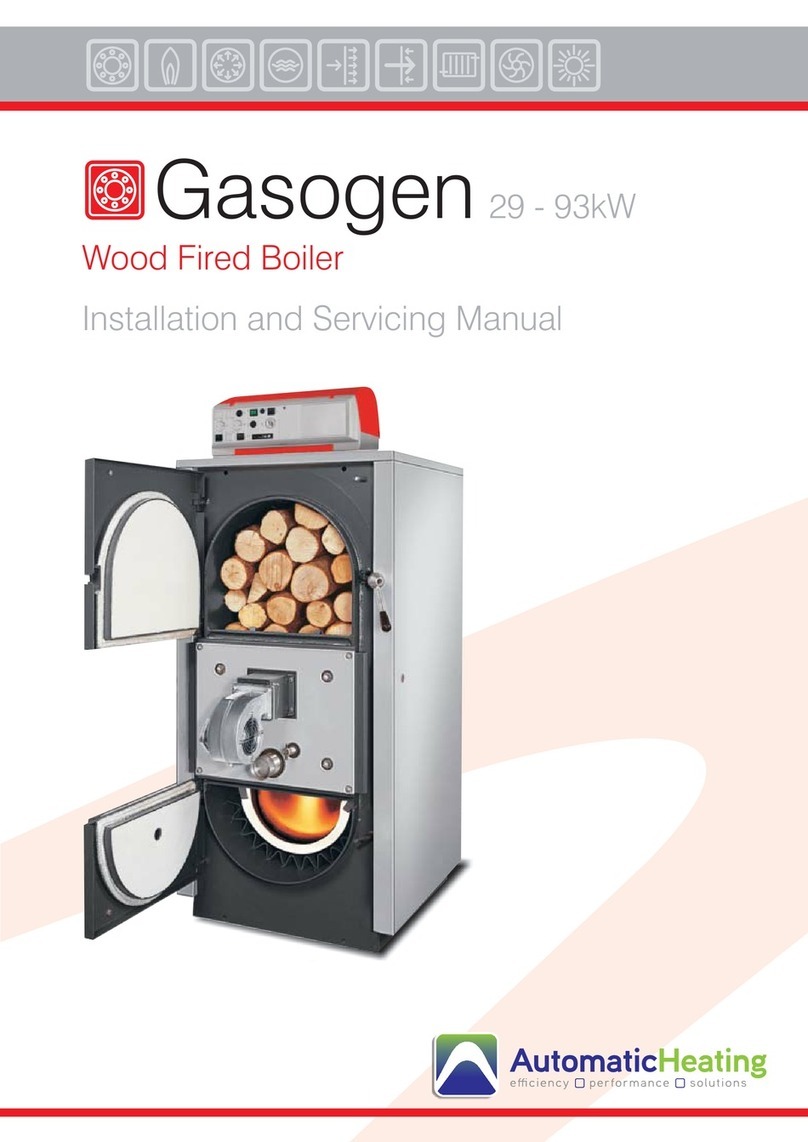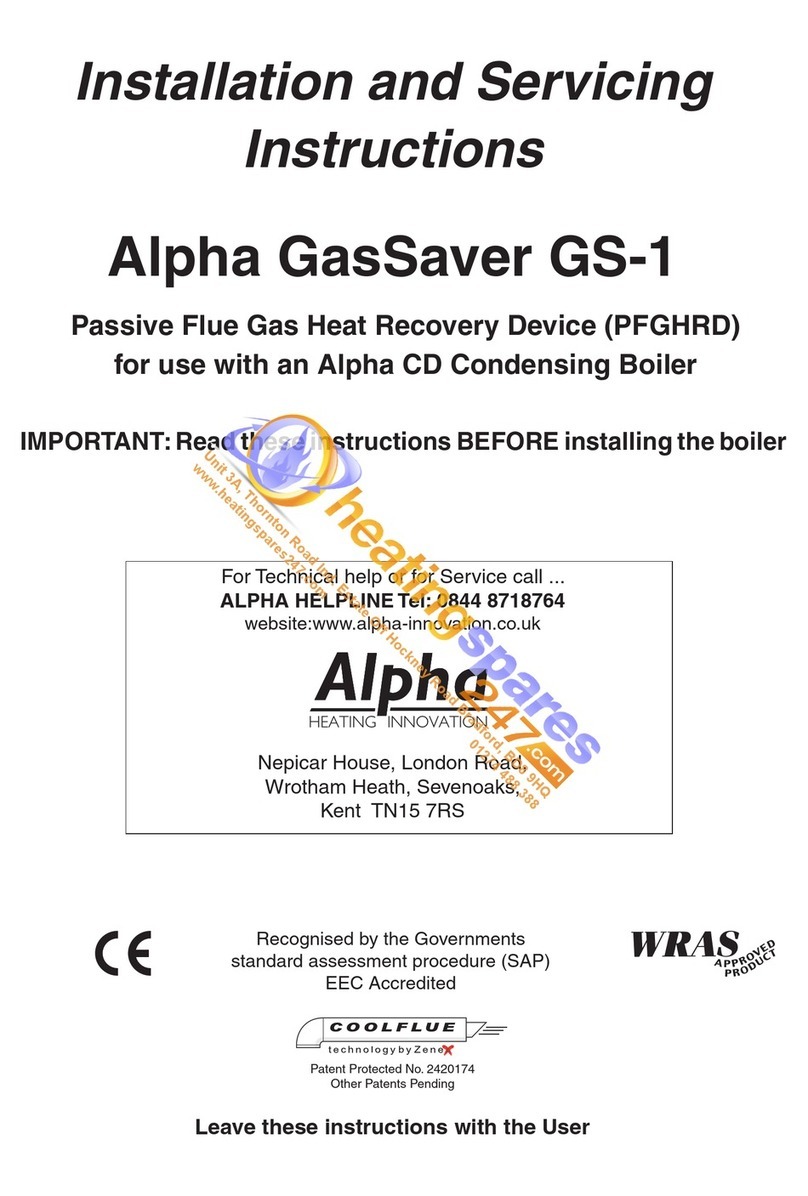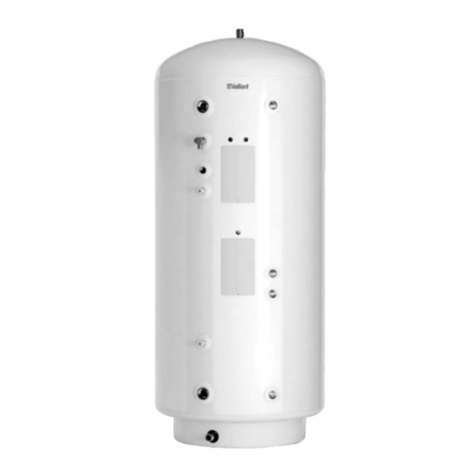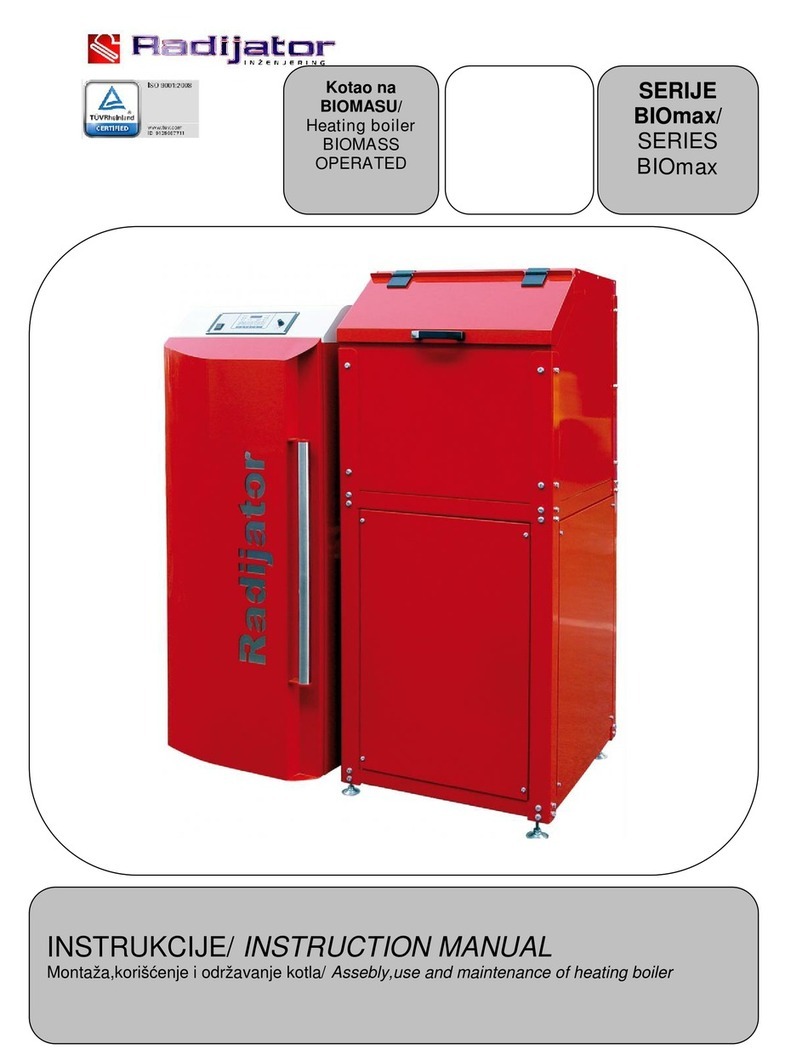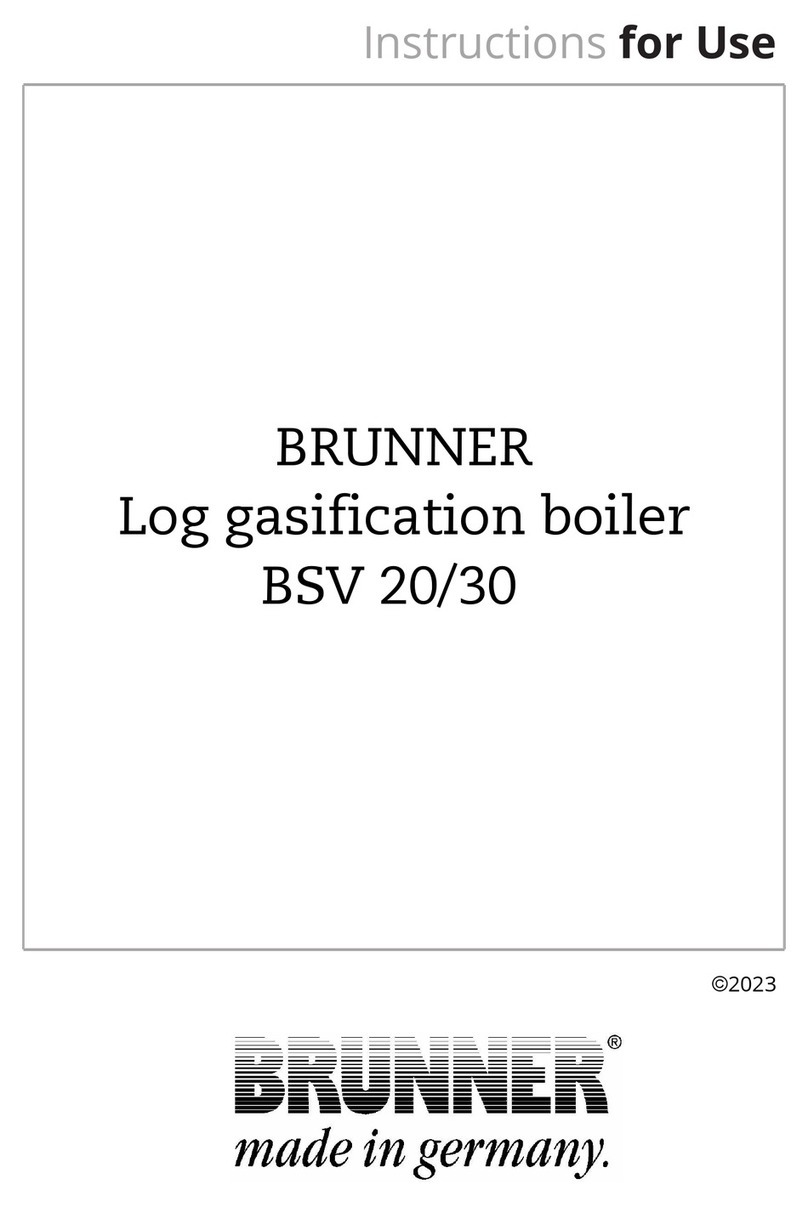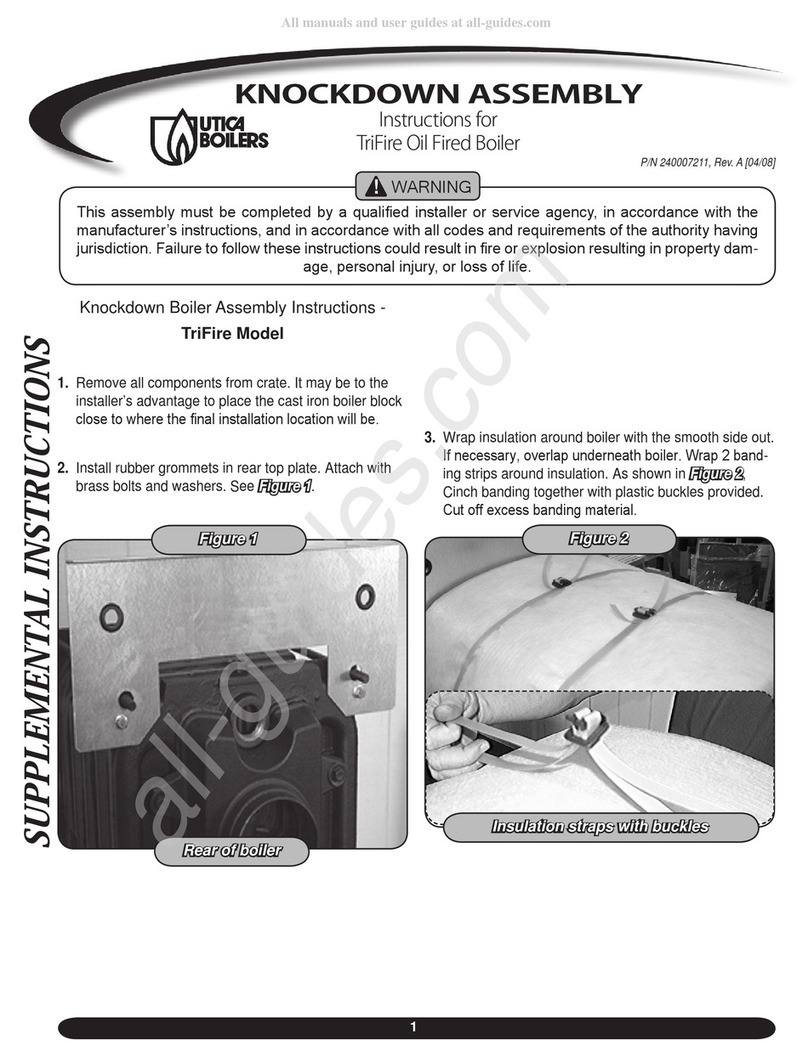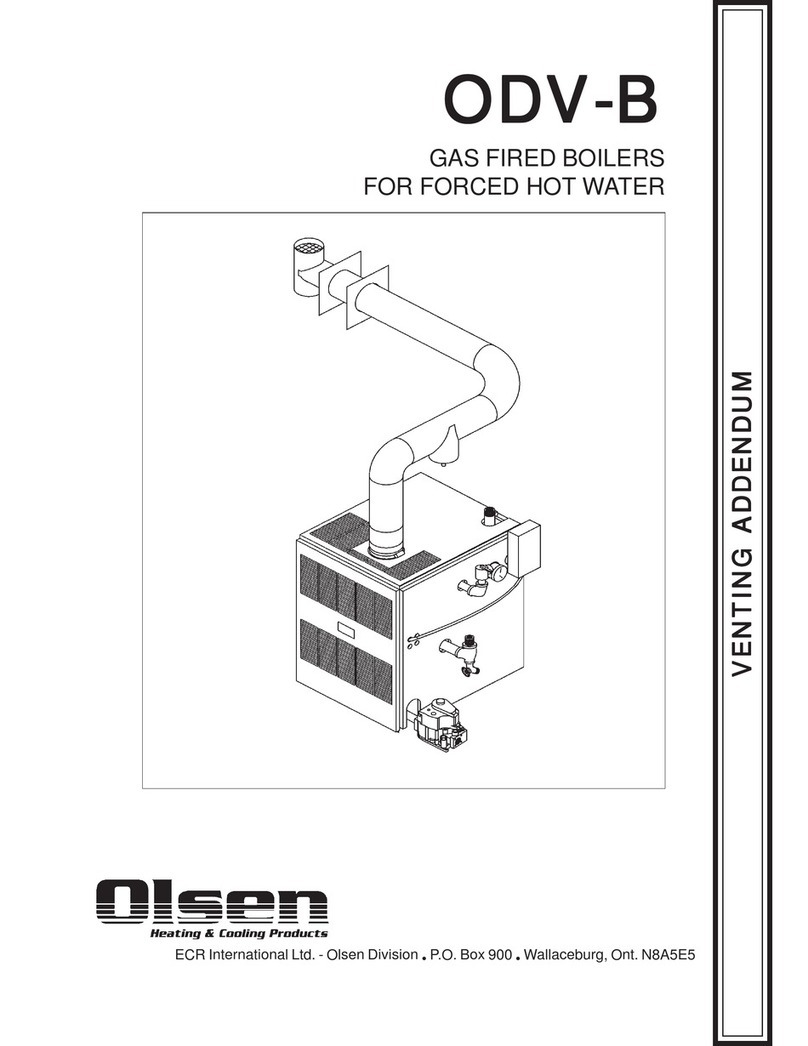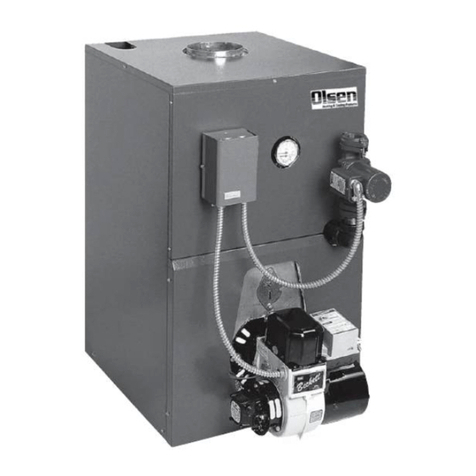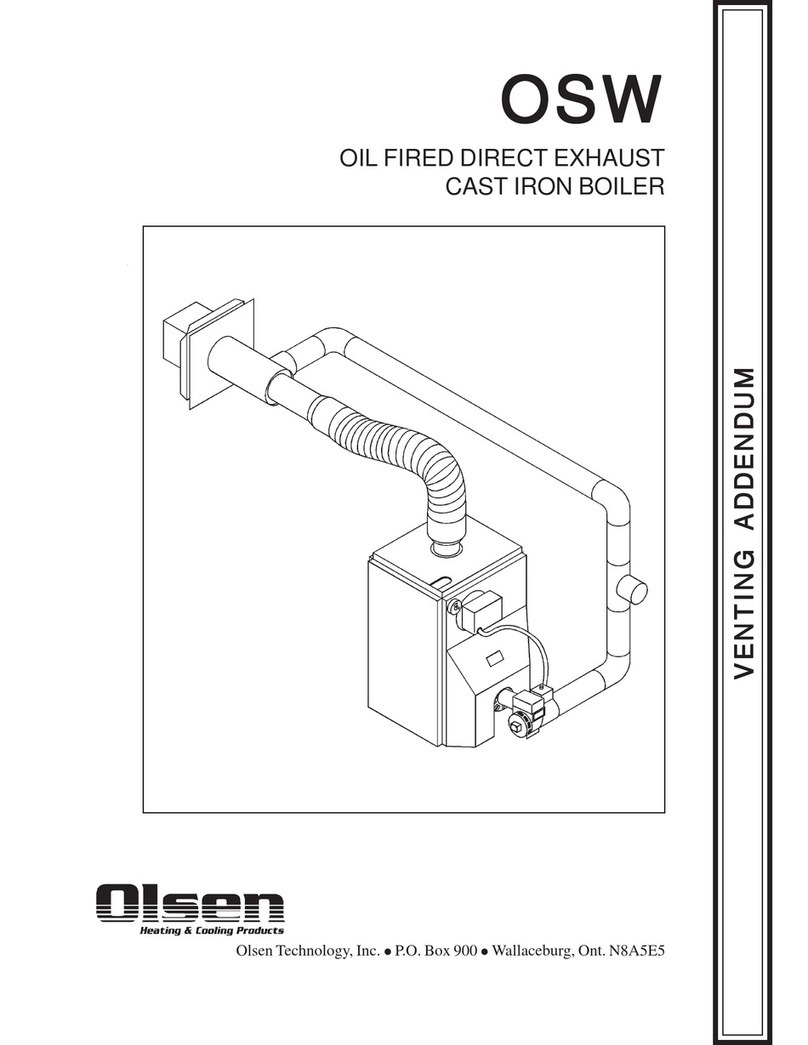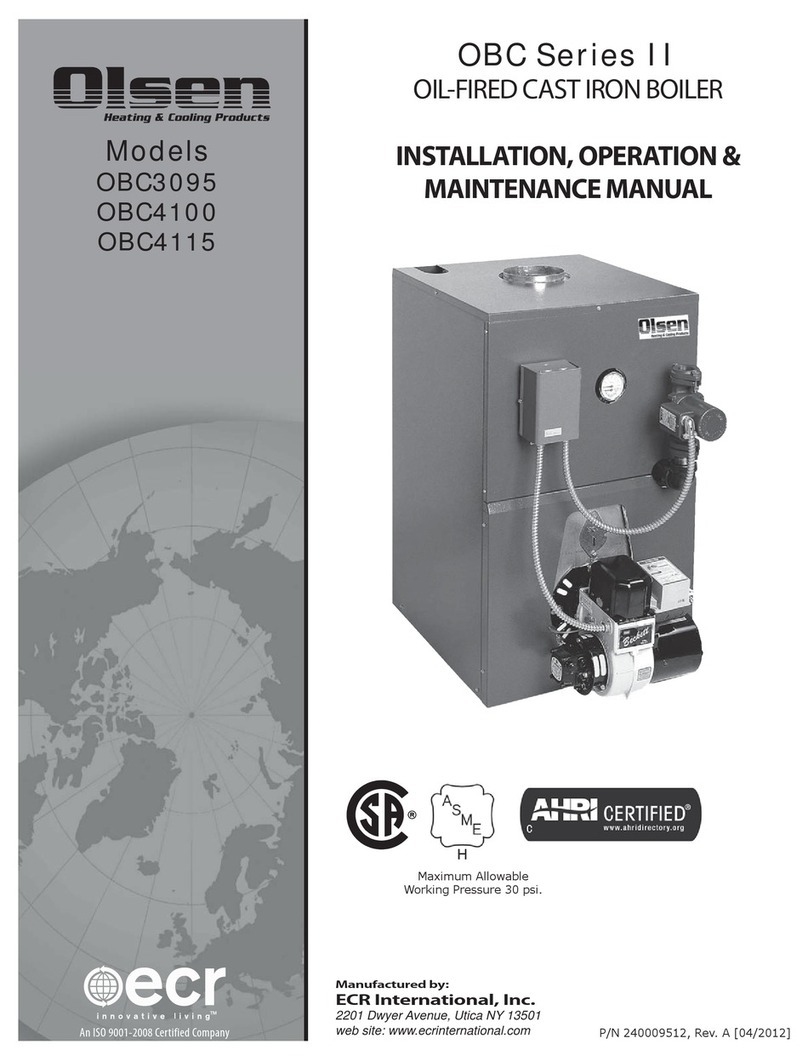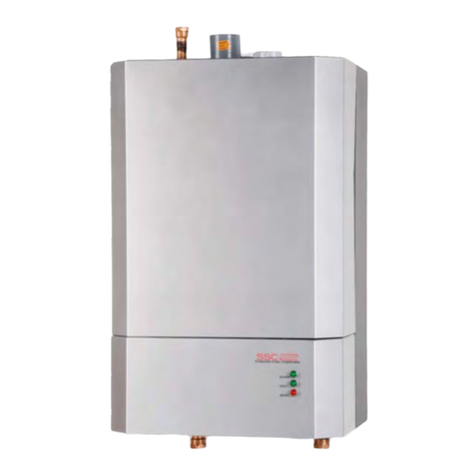
5
GENERAL INSTRUCTIONS
Before seasonal start up it is advisable to have a certied
service agency check the boiler for soot and scale in the
ues, clean the burners and check the gas input rate to
maintain high operating efciency. The service agency
should make certain the system is lled with water to
minimum pressure and open air vents - if used - to expel
any air that may have accumulated in the system. The
entire piping system should also be checked and if any
leaks appear, they should be repaired immediately.
The venting system should also be inspected at the start
of each heating season. The vent pipe from the boiler
should be checked for signs of deterioration or sagging
joints. Repair if necessary.
The following procedure should be followed to clean and
check the ue gas passageways:
Remove the burners from the combustion chamber 1.
by raising the burners 1. up from the manifold
orices and pulling toward the front of the boiler,
(See Figure 4)
Disconnect the vent pipe from the vent adapter.2.
Remove the jacket front panel. (See Figure 5)3.
Check venter assembly suction pressure.4.
Connect a slope manometer between the venter •
and the pressure switch with a tee and additional
tubing and connectors.
Turn the boiler on and read suction pressure on •
the manometer. Reading should be negative (-)
.55 ± .05 inches of water column or higher for
the DV50 thru 150 and negative (-) .65 ± .05
inches of water column or higher for the DV200.
If this reading is not attainable, contact a certied
service agency.
Remove the ue collector and venter assembly 5.
from the boiler castings by loosening the hold-down
bolts located on each side of the ue collector. (See
Figure 3)
Visually inspect the venter assembly for any unusual 6.
wear or dirt build up.
If venter has oil cups lubricate venter motor once a 7.
month during the heating season with a few drops
of nondetergent motor oil (SAE 20 or 30). Do not
over oil.
Place a sheet of heavy paper or similar material in 8.
the bottom of the combus8. tion chamber and brush
down the ue passageways. The soot and scale will
collect on the paper and is easily removed with the
paper.
A visual check of the main burner and pilot ames
should be made at the start of the heating season and
again in mid-season.
The main burner ame should have a well dened inner
blue mantel with a lighter blue outer mantel. (See
Figure 6) If the ame does not appear this way, check
the burner throats and burner orices for lint or dust
obstructions.
The pilot ame should envelop 3/8 to 1/2 inch of the
tip of the ignition electrode. To adjust the pilot ame,
remove the pilot adjustment cover screw on the gas valve
and turn the inner screw clockwise to decrease
or counterclockwise to increase the pilot ame.
See Figure 1. Be sure to replace the cover screw after
adjustment to prevent possible gas leakage.
The burners and pilot should be checked for signs of
corrosion, rust or scale build-up, and cleaned with a
nylon bristle brush.
The area around the boiler must be kept clear and free
of combustible materials, gasoline and other ammable
vapors and liquids.
The free ow of combustion and ventilating air to
the boiler and boiler room must not be restricted or
blocked.
In the event the ow of combustion products through
the ueways or the boiler venting system becomes
blocked, a ame roll-out safety switch will shut off the
main burner gas. See Figure 5. If this condition occurs,
do not attempt to place the boiler in operation. Contact
a qualied service agency.
It is suggested that a certied service agency be
employed to make an annual inspection of the boiler
and heating system. They are experienced in making
the inspection outlined above and in the event repairs
or corrections are necessary, they can make the proper
changes for safe operation of the boiler.
